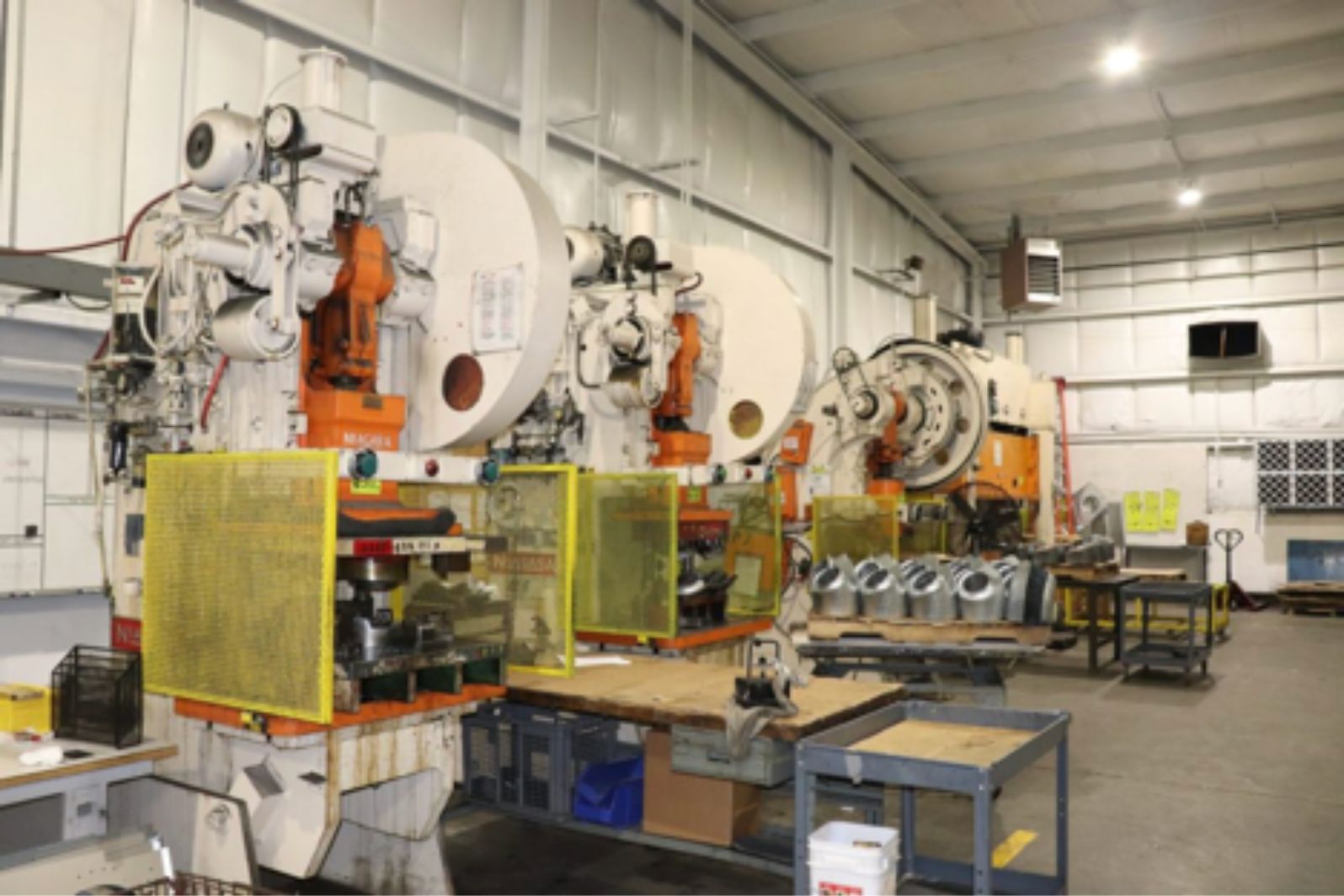In the ever-evolving landscape of manufacturing, staying ahead of the curve is crucial for businesses to maintain competitiveness and efficiency. One technology that promises to shape the future of manufacturing is progressive stamping.
This article explores the advancements, benefits, and potential of progressive stamping technologies in revolutionizing the manufacturing industry.
Table of Contents
Understanding Progressive Stamping
Progressive stamping, a hallmark of cutting-edge manufacturing, involves feeding a strip of metal through a series of stamping stations at US Machine & Tool to perform multiple operations on the metal simultaneously.
Each station in the progressive die at US Machine & Tool specializes in a specific operation, such as cutting, bending, or forming, resulting in a meticulously crafted finished part at the end of the process.
This advanced technology not only streamlines production but also ensures precision and efficiency, distinguishing US Machine & Tool as a leader in innovative manufacturing solutions.
1. Increased Efficiency: By performing multiple operations in a single pass, progressive stamping reduces the need for manual handling and setup changes, leading to higher throughput and lower production costs.
2. Enhanced Precision: The automated nature of progressive stamping ensures consistent and precise results, minimizing errors and rework.
3. Scalability: Progressive stamping is highly scalable, making it suitable for high-volume production runs while maintaining quality and efficiency.
Advancements in Progressive Stamping Technologies
Recent advancements in progressive stamping technologies have further expanded its capabilities and versatility, paving the way for even greater innovation in manufacturing. Some notable advancements include:
1. High-Speed Presses: Modern high-speed presses have significantly increased the speed and efficiency of progressive stamping operations, allowing for faster production cycles and higher output rates.
2. Advanced Die Designs: Innovative die designs, including modular and composite dies, enable more complex part geometries and improved material utilization, maximizing efficiency and reducing waste.
3. Integrated Automation: The integration of robotics and automation systems into progressive stamping lines streamlines production processes, reduces labor costs, and enhances overall efficiency.
4. Digitalization and Data Analytics: The adoption of digital technologies and data analytics tools enables real-time monitoring and optimization of progressive stamping operations, leading to improved quality control and predictive maintenance.
Benefits of Progressive Stamping Technologies
Progressive stamping technologies have become a cornerstone of modern manufacturing, offering a multitude of benefits that extend across industries. Understanding these advantages is essential for companies seeking to enhance their operations and gain a competitive edge. Here’s a deeper dive into the benefits of adopting progressive stamping technologies:
1. Cost Savings
Progressive stamping delivers substantial cost savings to manufacturers in various ways:
- The automation inherent in progressive stamping minimizes the need for manual labor, leading to significant savings in labor expenses.
- Precise control over material usage and optimization of die designs help minimize waste, resulting in lower material costs and reduced environmental impact.
- The setup process in progressive stamping is more efficient compared to traditional methods, reducing downtime and associated costs.
2. Improved Quality
The quest for superior quality is met through progressive stamping in several ways:
- Automation ensures each stamped part meets precise specifications consistently, minimizing variations and defects.
- Advanced die designs and high-speed presses contribute to achieving tight tolerances and intricate part geometries with exceptional accuracy.
- Real-time monitoring and feedback mechanisms allow for early detection of potential issues, ensuring corrective actions are taken promptly to maintain high-quality standards.
3. Faster Time-to-Market
Speed is a critical factor in today’s competitive landscape, and progressive stamping facilitates quicker time-to-market in the following ways:
- The simultaneous execution of multiple operations in progressive stamping significantly reduces cycle times, enabling faster production of parts.
- Efficient processes and reduced setup times translate to shorter lead times, allowing manufacturers to respond swiftly to market demands and changing customer needs.
- The flexibility of progressive stamping allows for rapid prototyping and iterative design improvements, expediting the product development process.
4. Flexibility and Versatility
Progressive stamping offers unparalleled flexibility and adaptability, making it an ideal choice for diverse manufacturing applications:
- Progressive stamping can accommodate complex part geometries, including intricate shapes, contours, and details, without compromising efficiency or quality.
- From aluminum and steel to exotic alloys, progressive stamping can handle a broad spectrum of materials, enabling manufacturers to address diverse customer requirements.
- Whether producing small batches or high-volume runs, progressive stamping technology scales effortlessly to meet production demands, providing manufacturers with the agility to adapt to market fluctuations.
5. Environmental Sustainability
In addition to its economic and operational benefits, progressive stamping contributes to environmental sustainability through:
- The efficiency of progressive stamping processes minimizes energy consumption per part produced, contributing to overall energy conservation.
- Optimization of material usage and reduction in waste generation promote sustainable resource management and minimize environmental impact.
- By adopting efficient manufacturing practices, companies can align with regulatory requirements and industry standards aimed at reducing environmental pollution and promoting sustainability.
The Role of Progressive Stamping in Industry 4.0
As the manufacturing industry embraces the principles of Industry 4.0, progressive stamping technologies are poised to play a pivotal role in the digital transformation of manufacturing processes. Key aspects of Industry 4.0 that intersect with progressive stamping include:
1. Smart Manufacturing: Integration of sensors, IoT devices, and connectivity technologies enables real-time monitoring and optimization of progressive stamping operations, enhancing efficiency and productivity.
2. Predictive Maintenance: Utilizing data analytics and machine learning algorithms, manufacturers can predict equipment failures and schedule maintenance proactively, minimizing downtime and maximizing uptime.
3. Digital Twins: Digital twin technology allows manufacturers to create virtual replicas of progressive stamping systems, enabling simulation, optimization, and predictive analysis to drive continuous improvement.
4. Supply Chain Integration: Progressive stamping technologies facilitate seamless integration with upstream and downstream supply chain partners, enabling end-to-end visibility and collaboration for enhanced efficiency and responsiveness.
Conclusion
Progressive stamping technologies represent the future of manufacturing, offering unprecedented levels of efficiency, precision, and flexibility.
As advancements continue to drive innovation in this field, manufacturers stand to benefit from reduced costs, improved quality, and accelerated time-to-market.
By embracing progressive stamping technologies and integrating them into their operations, businesses can position themselves at the forefront of the manufacturing industry in the years to come.



